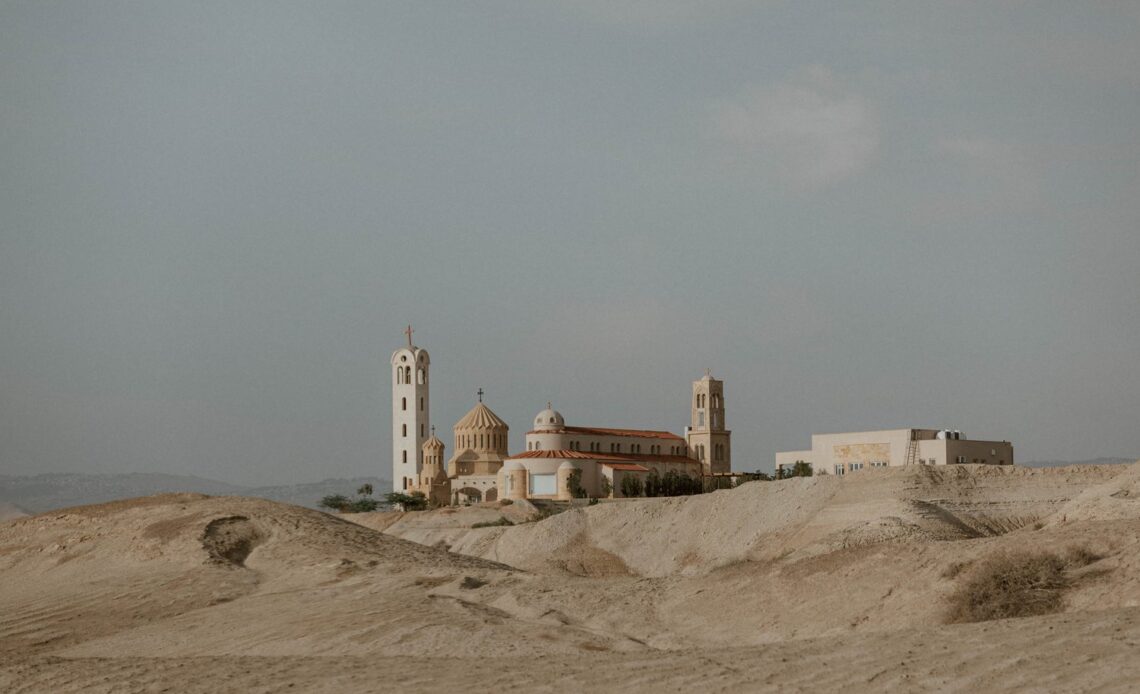Things to See at Bethany Beyond the Jordan
The complex covers quite a large, empty area which has been impacted significantly by drought and conflict.
Both banks of the Jordan River – that flows north to south from the Sea of Galilee to the Dead Sea – were closed military zones from 1967, and it was only the signing of the 1994 Israel-Jordan peace treaty which allowed the clearing of landmines so that the remains of churches, caves and baptismal pools were able to be safely unearthed here on the eastern side. This also permitted its development as a tourism – pilgrimage site, despite its proximity to the most disputed territory in the Middle East.
However, the diversion of the Jordan River by Israel, Jordan and Syria for agriculture and industry have reduced its flow by as much as 90%. This means that, through you are on the banks of the Jordan, the water levels over two thousands years ago would have been dramatically higher, and it can be a little challenging to get your head around the difference with today’s dried-up beds and stagnant, shallow waters of a river mentioned over 185 times in the Bible.
This difference may not impact the experience of those here on a pilgrimage, but it may come as a bit of a surprise to those who have little to no spiritual interest.
Etiquette
For non-religious visitors, sceptics, or those of a different faith, it’s incredibly important at all the below and throughout your visit to respect the fact that this is one of the world’s most important Christian pilgrimage sites. Act with the necessary respect for it as you walk around, particularly around those here to pray or for whom it is clearly a special place, don’t be too loud, and remove your hat if entering the church.
Spring of John the Baptist
The Spring of John the Baptist, where Jesus Christ was baptised, is actually quite unremarkable from an archeological point of view, and only identifiable by a set of stone steps leading down to a small, shallow pool of water.
It is however one of the most significant places in the Holy Land.
Using Bible descriptions and accounts from pilgrims spanning the 3-10th centuries, scholars were finally able to identify the area where Jesus was baptised, a claim sanctified with an open-air mass by Pope John Paul II in the year 2000.
This is the point at which our obligatory guide really fell short on his explanation, with no real weight given to the spring’s incredible religious significance. It’s a very peaceful spot…
Click Here to Read the Full Original Article at blog —ALONG DUSTY ROADS…
